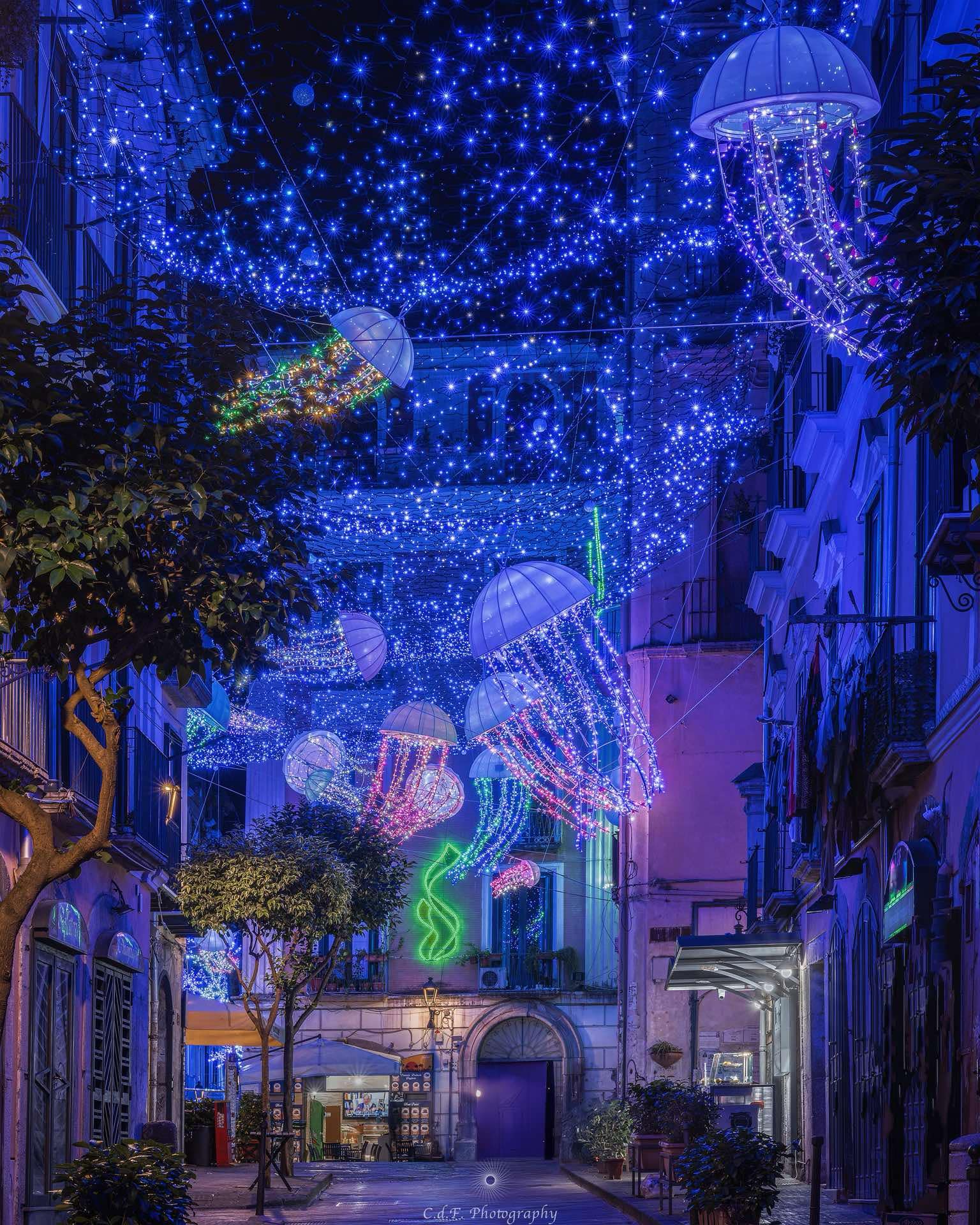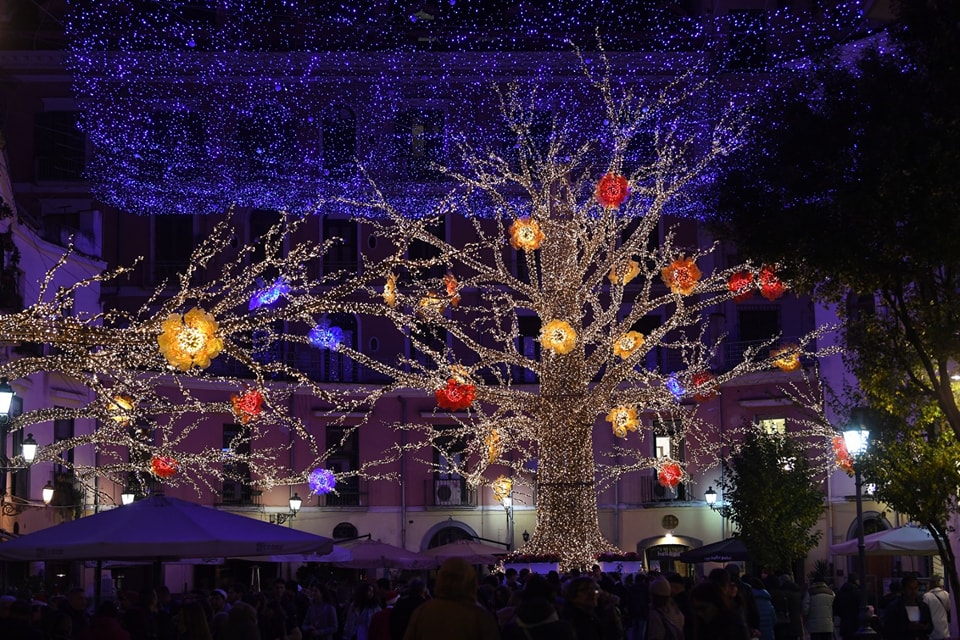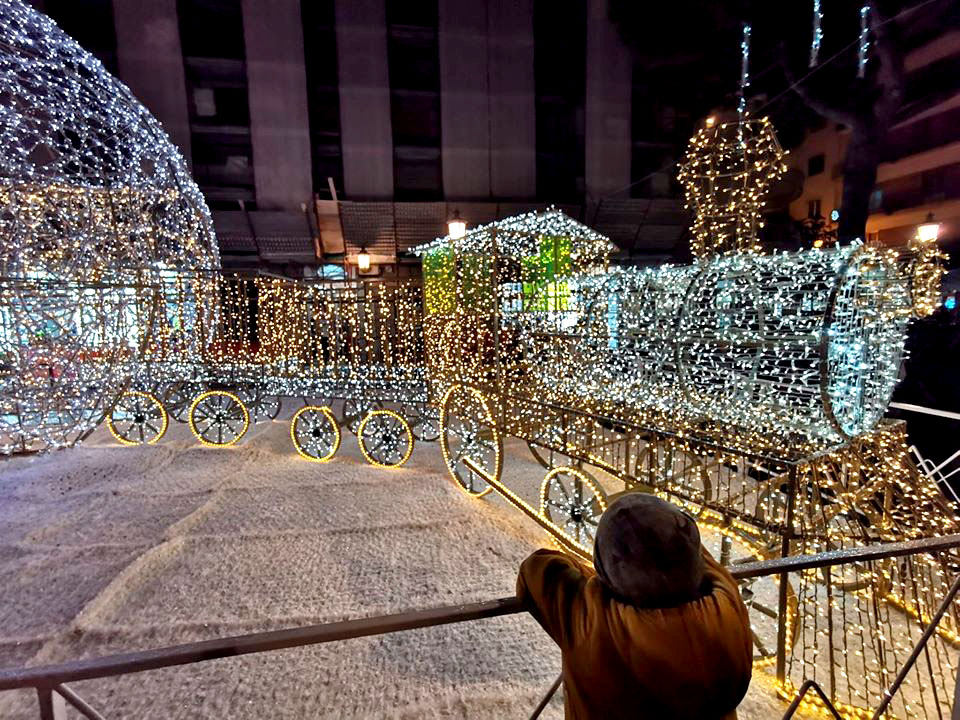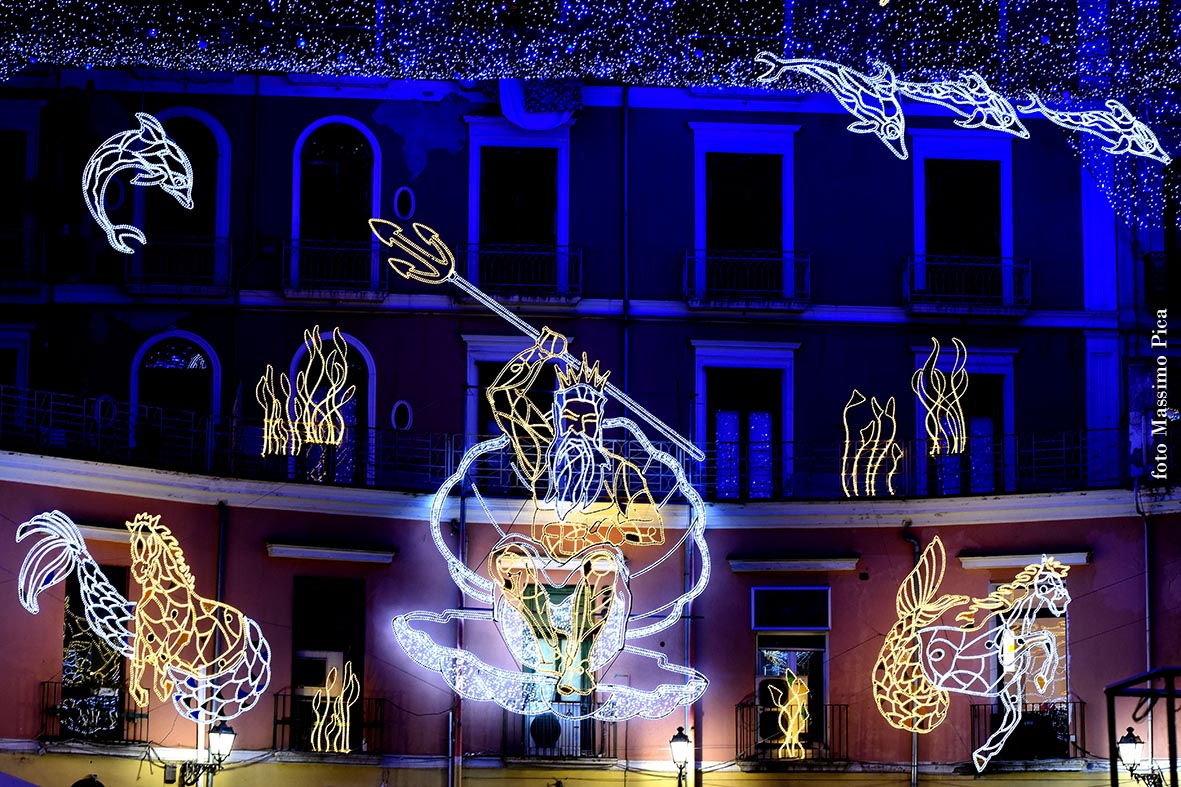Visiting Salerno
Salerno, located along the stunning Amalfi Coast in southern Italy, is a city rich in history, natural beauty, and cultural charm. It offers a mix of historic landmarks, vibrant local traditions, and a relaxed coastal atmosphere that appeals to travelers year-round.
Top Attractions in Salerno and Nearby Areas
| 📍 Salerno Cathedral (Duomo di Salerno) |

|
The Salerno Cathedral is the main church of Salerno and a minor basilica. It was built in Romanesque style between 1076 and 1085 after the city's conquest by Robert Guiscard, under Archbishop Alfano I. It was consecrated in 1084 by Pope Gregory VII, then in exile. The cathedral stands on earlier ruins: a Roman temple and a paleo-Christian church. Its importance grew with the discovery of St. Matthew’s remains, buried there in 954. Over the centuries, earthquakes and quick early construction led to several restorations, especially after 1688, shaping its current Baroque-influenced interior. Recent work has partially restored its original Romanesque look. The bell tower, with Byzantine-Norman features and eight bells, is a major artistic and historical highlight. |
| 📍 Arechi Castle (Castello di Arechi) |

|
The Arechi Castle is a medieval fortress located about 300 meters above sea level, overlooking the city and gulf of Salerno. Named after the Lombard Duke Arechi II, it was strategically built on Mount Bonadies and was never conquered due to its strong defensive position. Its origins date back to the 6th century, with major expansions in the 8th century under Arechi II. The castle served both military and residential functions, housing nobles and undergoing various renovations, especially during the Angevin and Aragonese periods. In modern times, the castle was abandoned, later restored, and opened to the public in the 1980s. Major restoration projects continued into the 2000s, making it fully accessible, including the creation of a museum and preservation of historical features like the hypogeum and ancient frescoes. |
| 📍 Trieste Promenade (Lungomare Trieste) |

|
The Trieste Promenade in Salerno is a pedestrian promenade and garden stretching about 1.5 km along the Tyrrhenian Sea. It was developed between the 1930s and 1950s, with early sections built in the 1930s and later expansions using volcanic ash and war rubble after the 1944 eruption and bombings. The final phase included the Masuccio Salernitano port and the Monument to the Sailor. In the 1950s, it was called the most beautiful seafront in the Mediterranean. The seafront originally had a rail track for transporting goods from the commercial port to the train station. It underwent major renovations in the 1990s, including new urban furniture and landscaping. In the 2000s, new trees and California palms were planted to restore the botanical layout after a pest outbreak damaged many plants. Accessibility was improved with tactile paths for the visually impaired. |
| 📍 Villa Comunale |

|
The Villa Comunale is considered the "garden" of Salerno. It was designed in 1870 at the city's entrance from Vietri sul Mare and features the famous Tullio Fountain. Originally, the area housed religious complexes and later served as a military zone. In 1818, plans for a public garden were proposed, but the first real development came in 1870 with architect Casalbore’s project for public gardens near the Verdi Theater. The layout included a main avenue with circular flower beds and iron decorations added later. By the late 1800s, the area became a fashionable district, hosting cultural and musical events. The garden was slightly reduced when the Prefecture building was constructed. In 1997, the villa underwent a major botanical and architectural restoration, led by architect Enrico Auletta. New Mediterranean plants were introduced, the central fountain restored, old benches recovered, and the entire area re-paved and pedestrianized. |
| 📍 Minerva’s Garden (Giardino della Minerva) |

|
The Minerva’s Garden is a botanical garden located in the historic center of Salerno. In the Middle Ages, it served as a teaching garden for the Salerno Medical School, making it one of the earliest examples of a modern botanical garden. Founded in the 13th century by Matteo Silvatico, it was used to grow and study medicinal plants. The garden includes an ancient irrigation system and a scenic terraced layout built on old city walls, offering views of the sea and hills. The garden was restored and reopened in 2000 through a project funded by the city of Salerno. Key features include a monumental staircase, wooden pergolas, historic architecture from the 17th–18th centuries, and a special microclimate ideal for cultivating diverse plants. Over 300 plant species are cultivated here, including rare and legendary ones like the mandrake. Many of the plants were used in medieval medicine and are labeled according to an ancient botanical classification system. |
| 📍 Salerno Harbor station (Stazione marittima di Salerno) |

|
The Salerno Harbor station is the city's main cruise terminal, located on Molo Manfredi. It was designed by renowned architect Zaha Hadid after a 1999 international competition and officially opened on April 25, 2016, shortly after her passing. The terminal symbolizes the transition from land to sea through its fluid, shell-like structure and innovative architectural design. Covering 4,500 m², the terminal includes ticketing, restaurant, waiting areas, and offices, divided into three interconnected blocks. At night, it acts as a beacon for the port thanks to its lighting and wide glass windows that offer scenic views of Salerno and the Amalfi Coast. The port authority plans for the terminal to handle 150 cruise ships and around 500,000 passengers annually, with the capacity to dock two large ships simultaneously. |
| 📍 Church of St. George (Chiesa di San Giorgio) |
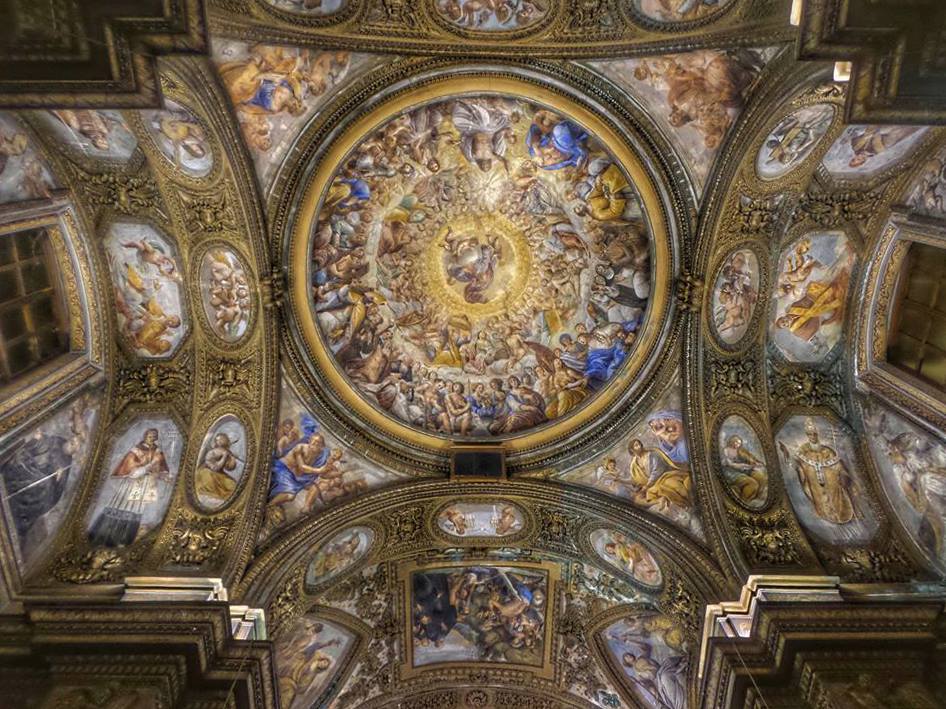
|
The most beautiful Baroque church in Salerno, the church of St. George dates back to the Lombard era, with records from 819. Initially a small religious settlement, it evolved into a full Benedictine monastery. Major transformations took place in the 16th and 17th centuries, including a reversed church layout and architectural interventions by Ferdinando Sanfelice. The monastery was suppressed in the 19th century; only the church survived, while other buildings were repurposed. |
| 📍 Monumental Complex of St. Peter at Court (Complesso archeologico di San Pietro a Corte) |

|
The monumental complex of St. Peter at Court is an archaeological site showing remains from different historical periods since the 1st century AD. The area includes a Roman frigidarium, a Christian funerary church from the 5th century, and a Lombard palace built by Arechi II in the 8th century — the only surviving example of such architecture in Italy. During Norman and later periods, the site was reused for civic assemblies and religious purposes. The Salerno Medical School also used the space for graduations. From the 16th century onward, it underwent restorations, periods of neglect, and various uses including as a warehouse and private businesses. |
| 📍 Historical center of Salerno |

|
The historic center of Salerno is the heart of the old city, made up of medieval alleys stretching from the western edge of the city to the Rafastia stream. The settlement originated around 197 BC with the Roman founding of Salernum. In 197 BC, a Roman colony was established at castrum Salerni to control the region, especially the Sele plain allies of Hannibal. The city developed along the Via Popilia, mainly around modern Via Tasso and Via dei Canali, with Via Tasso likely serving as the main decumanus. In the Middle Ages, Salerno grew under the Lombards starting in 626 AD. Under Arechi II, the city expanded and was fortified with a triangular defense system, including walls from Arechi Castle to the sea, with towers and bastions. By the late 20th century, Salerno had nearly 170,000 inhabitants, many living in the historic center. From the 16th century onward, it gained noble palaces and churches. After the unification of Italy, Salerno experienced significant urban expansion, including restoration projects in its historic areas like the "Fornelle" district. |
| 📍 Virtual Museum of the Schola Medica Salernitana (Museo virtuale della scuola medica salernitana) |

|
The Virtual Museum of the Schola Medica Salernitana, opened in 2009 is housed in the former Church of San Gregorio, built during Salerno’s Lombard period around the year 1000. Since 2012, the Galahad Cooperative has handled its events and hospitality. It features a modern layout using videos and 3D reconstructions with professional actors to illustrate the knowledge and practices of the Schola Medica Salernitana, especially from the 10th to 13th centuries. Visitors can view illuminated panels displaying replicas of medieval manuscripts produced by the school. The most popular exhibit showcases the famous Regimen Sanitatis Salernitanum, the school's most renowned work. The floor of the main room is made of glass, revealing the underlying ancient structure. One can observe original and reconstructed surgical tools used by early physicians. Also notable are panels about Trotula de Ruggiero, considered the first female doctor in history, with insights into the role of women in the Middle Ages. |
| 📍 Pompeii |
|
Pompeii was an ancient city whose history began in the 9th century BCE and ended abruptly in 79 CE when it was buried by the eruption of Mount Vesuvius. The city was rediscovered in 1748, and its archaeological remains became a UNESCO World Heritage Site in 1997. Pompeii was influenced by several cultures: first the Osci, followed by the Greeks and Etruscans. It eventually became part of the Samnite and later Roman spheres. During Roman control, especially after the Social War and under the emperor Augustus, the city prospered with rich architecture, trade, and culture. Pompeii became a popular retreat for the Roman aristocracy, and many public buildings were renovated or built, such as the Great Theater and the Building of Eumachia. However, signs of decline appeared under Caligula and Claudius, marking the beginning of the city’s waning period before its final destruction. |
| 📍 Paestum |

|
Paestum, formerly known as Pesto until 1926, is an ancient city of Magna Graecia, originally called Poseidonia by the Greeks in honor of Poseidon, and also devoted to Athena and Hera. The area was inhabited since prehistoric times, with settlements from the Paleolithic to the Bronze Age. Poseidonia was likely founded in two phases by settlers from Sybaris around the mid-7th century BCE. It grew quickly due to its strategic position and trade routes. A necropolis from around 625 BCE confirms its early establishment. Between 560 and 440 BCE, Poseidonia experienced its peak, benefitting from the decline of Etruscan power and refugees from destroyed Sybaris. Major temples such as the so-called Basilica, Temple of Athena, and Temple of Neptune were built during this time. Between 420-410 BCE, the Lucanians took control and renamed the city Paistom, but Greek culture and prosperity persisted. The Romans conquered it in 273 BCE, renamed it Paestum, and integrated it into their empire, adding major structures and granting coin-minting rights. |
| 📍 Vietri sul Mare |

|
Vietri sul Mare is famous for its ancient ceramic tradition. The area likely corresponds to ancient Marcina, once an Etruscan-Samnite settlement and later a Roman port, probably located near the Bonea River. Throughout history, Vietri served as a key trade port for nearby Cava de’ Tirreni, especially during medieval and Bourbon times. From 1860 to 1927, it was an administrative center under the Kingdom of Italy. Today, it is strongly influenced by nearby Salerno and may be included in its metropolitan area. In 1944, when Salerno was briefly Italy's capital, King Victor Emmanuel III stayed at Villa Guariglia in the nearby Raito district. |
| 📍 Amalfi Coast (Costiera amalfitana) |

|
The Amalfi Coast is a stretch of the Tyrrhenian coastline in Salerno province, Campania, extending from Positano to Vietri sul Mare. Recognized as a UNESCO World Heritage Site since 1997, it is world-renowned for its natural beauty and takes its name from the town of Amalfi, the historical and geographical heart of the area. In ancient times, it was part of the Roman Empire, as shown by the remains of villas like the one in Minori. After allying with the Byzantines, the coast gained autonomy, paving the way for the Duchy of Amalfi, a powerful maritime republic in the 10th and 11th centuries. Following conquest by the Normans in 1136 and attacks by Pisa, Arabs, and Turks, the region declined. Defensive watchtowers were built in the 16th century and are now tourist landmarks. From 1811 to 1860, Amalfi was an administrative center under the Kingdom of the Two Sicilies, and in 1861 became part of the Kingdom of Italy. Since the late 1800s, the coast has experienced international tourism growth, with Positano becoming a major attraction. Known as the “Divine Coast”, it drew figures like Jacqueline Kennedy, Grace Kelly, Roberto Rossellini, and Ernest Hemingway. |
Cuisine
Salerno’s cuisine reflects the traditions of the Mediterranean diet, with fresh and locally sourced ingredients at its core.
Salerno’s culinary traditions also include hearty and flavorful dishes. Stuffed spleen (also known as Meveza) is a unique local specialty prepared by filling the spleen with garlic, parsley, and chili, then cooking it with olive oil and vinegar. You can try it at Botteghelle 65. Another cherished dish is Ciambotta, a comforting vegetable stew made with cubed eggplants, peppers, and potatoes. Cheese enthusiasts will delight in the Buffalo Mozzarella, a world-famous specialty from the province of Salerno. Particularly noteworthy is the Zizzona di Battipaglia, a generously sized and flavorful variation of this beloved cheese. No visit to Salerno is complete without tasting the variety of fried delicacies, such as arancini. You can try them at Friggitoria Sabatino. Seafood lovers will be delighted by the fish fritters at Sfrizio.
Among the region's most famous desserts is the Delizia al Limone, a dome-shaped sponge cake filled with luscious lemon cream made from the iconic lemons of Amalfi or Sorrento. For those with a sweet tooth, the Apolline by Pasticceria Romolo is a must-try. Another standout is the Scazzetta del Cardinale, created by the historic Dolceria Pantaleone. This sponge cake is filled with wild strawberry cream and topped with a bright red glaze, resembling a cardinal’s hat, which gives the dessert its name. In addition to these local specialties, visitors can enjoy classic Campanian pastries like babà, sfogliatelle, and pastiera. We also suggest the brioche with ice cream by Nettuno, a soft, freshly baked brioche filled with artisanal ice cream.
The region’s signature liquor is Limoncello. This zesty and refreshing digestif is crafted using the peels of Amalfi lemons, combined with sugar, water, and alcohol. Its bright, tangy flavor makes it a perfect way to conclude a meal.
Events and Festivals
Salerno hosts a variety of cultural events throughout the year. In particular, the Luci d’Artista festival, held in the winter, transforms the city with elaborate light displays. Some city squares and streets are decorated with illuminations conceived by contemporary artists, who qualify for high scenic value or strongly symbolic and conceptual values.
